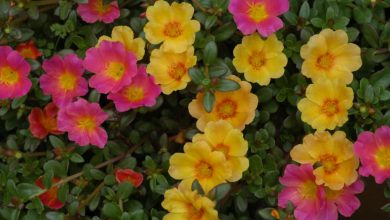Weevils: [Characteristics, Detection, Effects and Treatment]

What are weevils?
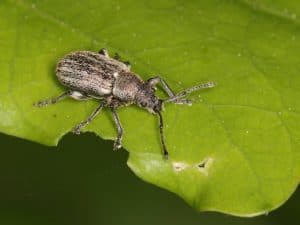 The curculionids or curculionidae, better known as weevils, are tiny insects belonging to the herbivorous Coleoptera family, with thousands of members, so many that they reach some 5,489 genera and more than 86,000 species identified around the world.
The curculionids or curculionidae, better known as weevils, are tiny insects belonging to the herbivorous Coleoptera family, with thousands of members, so many that they reach some 5,489 genera and more than 86,000 species identified around the world.
These insects base their diet on a plant-type diet, so they become a real threat to crops, because when they become a pest they destroy everything.
They are used as effective biological control agents to kill weeds or weeds.
How can we identify them?
Weevils are actually tiny insects, but they belong to one of the most varied families of species.
grain weevil
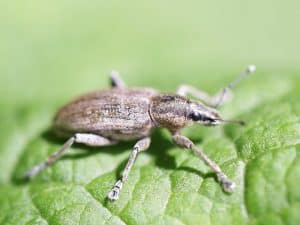 Precisely, one of the most damaging species is the Sitophilus granaeius, the grain weevil, very destructive, highly damaging because it produces millionaire losses by affecting stored cereal grains worldwide.
Precisely, one of the most damaging species is the Sitophilus granaeius, the grain weevil, very destructive, highly damaging because it produces millionaire losses by affecting stored cereal grains worldwide.
The females of this species are capable of producing many eggs (between 300-400 and they put one in each grain) and the larvae get their food inside the grains they invade.
They have an approximate length of between 3-5 mm, but they register variations depending on the grain they attack.Those that invade maize crops are larger than those that occupy millet crops.
The color in adults is a reddish-brown hue. They do not fly, when they are in the larval stage they lack legs and have a kind of hump, with a cinnamon-colored head. And the pupae develop snouts very similar to that of the adults.
In general, weevils are characterized by having a hard shell or bark and powerful chewing mouthparts, located at the end of a proboscis or tubular trunk-like appendage that varies according to the species, and can configure the entire face, or be very long and narrow and with antennae that remain under its protective cover.
Conduct
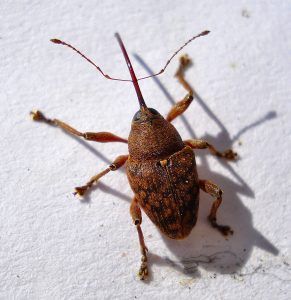 These insects are intelligent, so much so that they are capable of pretending to be dead when they feel threatened. They bend their legs until they stick to the trunk and remain motionless.
These insects are intelligent, so much so that they are capable of pretending to be dead when they feel threatened. They bend their legs until they stick to the trunk and remain motionless.
And the females can identify when a grain already has one of its eggs inside, so this methodology allows them to advance in their invasive work.
They are capable of penetrating the grain by opening a hole to deposit the egg and then sealing it with a sticky substance that they secrete.For this reason, the affected foods are filled with a whitish layer or powder identifiable with the naked eye.
Reproduction and life cycle
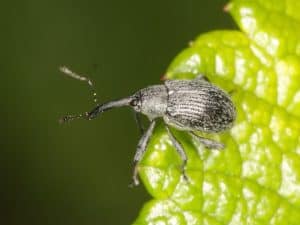 Various studies show that just two weevils can produce about 6,000 offspring annually, which are produced in each cycle of 3 per year.
Various studies show that just two weevils can produce about 6,000 offspring annually, which are produced in each cycle of 3 per year.
Its life cycle reaches 4 well-identified stages: the egg, larva, eruption and adult. The eggs are whitish in color, oval in shape but rounded at one end and flattened at the other.
The embryos usually burst between 2-4 days. They are white to yellow, with a darker head, somewhat reddish.They cannot move because they lack legs, but they bite hard on plants and grains, since they need to eat food.
In adults, they become between 6 to 8 weeks, although there are varieties that take longer and can live between 40 to 90 days and up to 3 years.But as a general rule, when the cocoon bursts they are already young adults and are able to mate males and females.
What plants do weevils affect?
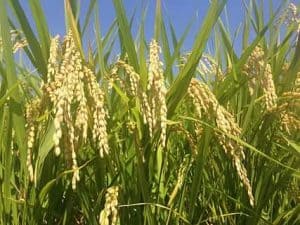 Weevils are present in many crops, practically invading all varieties of grains, especially rice, corn and oat crops, barley, rye, wheat.
Weevils are present in many crops, practically invading all varieties of grains, especially rice, corn and oat crops, barley, rye, wheat.
Among many others affected by the invasive activity of Sitophilus granaeius, which multiplies with amazing speed and that allows it to affect an entire crop in a short period of time.
Corn weevils, for example, take between 6 to 8 weeks to grow, that is, to pass from the adult stage.The wheat weevil alone can reproduce about 6 million offspring a year. That great reproductive power makes them very powerful.They can damage all plants in a short time.
They lay their eggs at the tips of leaf petioles and in crevices in the bark of trees.Cereal and grain crops are also destroyed because they live inside the grains, laying eggs that mature into thousands of worms that they eat constantly.
But in the garden the species Otiorhynchus sulcatus appears, which seeks to nest in perennial, annual and bulbous ornamental plants. Among their favorites, azaleas and hydrangeas stand out, although the damage they cause in the eucalyptus fields is total.
How to fight weevils?
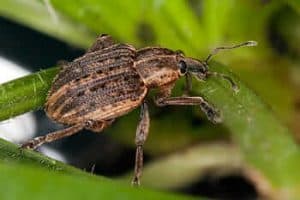 Weevils can adapt to any environment, although they prefer dry ones. That is why they attack crops of all kinds, as well as grain crops in storage and many other foods that we have stored at home.
Weevils can adapt to any environment, although they prefer dry ones. That is why they attack crops of all kinds, as well as grain crops in storage and many other foods that we have stored at home.
And not to mention the flowering bushes that we grow in the garden. In fact, they are everywhere and even a bonsai-like tree can be attractive to this pest.
In the home, weevils prefer moist areas, so it’s not uncommon for them to aggressively invade pantries.They first attack grains that have been stored the longest, so a good preventive measure is to keep them in the fridge, so that low temperatures spoil their reproductive plans, since that way the eggs do not develop.
It is very effective to water a product called diatomaceous earth in places where the weevil is usually seen. This remedy dehydrates them. It must be placed inside small bags and it will do its job of reducing them very effectively.
The feeding activity is carried out at night, when they come out to eat leaves and stems of plants. During the day they hide from their predators.Therefore, it will be convenient to carry out periodic checks at night, with the help of a flashlight, in order to detect them in time and remove them from the plant with the help of good tweezers.
But without a doubt, it is best to apply a specific insecticide, following the instructions provided by the manufacturer, as soon as the presence of adult weevils is discovered.
And it is also customary to moisten the substrate, between the months of July to October, when they have a lot of reproductive activity, because in this way the outbreak of the larvae or worms is avoided, which is the key in the matter of fighting them.
What are the best products to eliminate weevils?
Some recommendations to defeat them are the following:
- The adults can be trapped by means of traps or food baits, in order to prevent them from laying new eggs, because as the larvae are inside the plant or under the ground, it is more difficult to fight them.
- A good strategy against the so-called banana boll weevil is to place a trap on the ground made with a bottle filled with soap and water that contains the bait in the center. When the hungry weevils fall, they drown and die.
- There are other traps where they get stuck, very used by the way to combat the species that attacks palm trees.
- Another method to combat them is to freeze them when we find them in the harvest of grains and cereals. The ideal temperature is -20ºC, at least for 48 continuous hours. This is how we eliminate weevils and eggs.
- Another homemade formula consists of placing garlic in pieces located at the bottom of the containers where we keep the grains in the pantry. The smell scares them, but they should be replaced every 2 to 3 months. It also works if they are placed at the foot of the plants.
- Neem oil is also very effective in the garden, in concentrations ranging from 3-5 ml per liter of prepared solution. Vigorous sprays should be applied to the leaves and stems of garden plants.
An excellent natural insecticide, we can prepare it with laurel, of great disinfectant power. To do this, we must have at hand:
- 300 grams of fresh bay leaves for every 10 liters of water.
- Cut the leaves in half and then put them in a large container.
- You should boil a 5th part of the water and then add it to the main container with leaves.
- Cover immediately and wait for it to cool down. Then he adds the rest of the water and take it to a dark place, but don’t cover it completely.
- Two days later, the mixture should be strained and preserved in a spray bottle. It is advisable to keep it in the fridge so that it is preserved intact.
- For a month in a row, you can make continuous sprays on the plants in the garden, but every 3 days before nightfall.


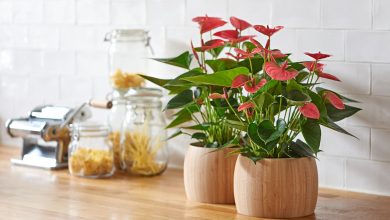
![Photo of Cultivate Amarliys: [Care, Planting, Irrigation and Substrate]](https://www.complete-gardening.com/wp-content/uploads/2022/08/cultivate-amarliys-care-planting-irrigation-and-substrate-390x220.png)
